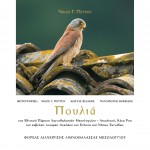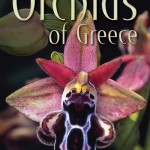Think of tropical palm forests; of dark boreal forests of birch and spruce, and of all the forest types in between; think of lofty mountaintops reaching up to 3,000 metres in height and of underwater canyons of even greater depth; of swift-flowing rivers and vast wetlands but also of arid steppes, even of sand dunes like the Sahara. Add thousands of islands, an endless shoreline, deep gorges and alpine lakes, geologic formations and caves on both land and in the sea, throw in a few active volcanoes and you will have a fairly good idea about the diversity of habitats in Greece.
These habitats are home to an astounding wealth of flora and fauna species: 6.500 different plants, 1,800 mushrooms, 115 mammals, 443 birds, 22 amphibians and 64 reptiles, 162 freshwater and 476 salt water fishes, 235 butterflies, 6.863 species of beetles and some 30.000-40.000 other invertebrates. Thousands of those species and subspecies are unique in the world – they are endemic and they are not found anywhere else. Biodiversity in our country is increased by many species of eastern and southern origin which reach here the western or northern limit of their distribution. Greece is the only country in Europe where these species can be found.
This invaluable natural wealth is at risk. Habitat destruction or degradation, unsustainable land use practices, overexploitation of natural resources, pollution, ocean acidification, invasive foreign species and climatic change –all the causes of biodiversity loss worldwide– affect the plants and animals in our country.
The legal framework of the European Union, including the various Directives and the Natura 2000 network of protected areas, does not suffice to halt this loss in Greece, where the lack of awareness, indifference and, recently, the economic instability combine to place the protection of nature rather low among the priorities of both governments and citizens.
Informing and educating the Greek public are paramount if we are to effectively counter the huge problem of biodiversity loss. Increasing our awareness, individually as well as collectively, about the value of our natural heritage and about the need to protect it may allow us to preserve some of the riches we inherited for future generations.
This is why the Hellenic Society for the Protection of Nature, steadfastly serving this cause for the last 60 years, decided to publish this volume. We hope that its message will spread as widely as possible.
Forewords by the Ecumenical Patriarch Bartholomew and former European Commissioner for the Environment Mr. Stavros Dimas



